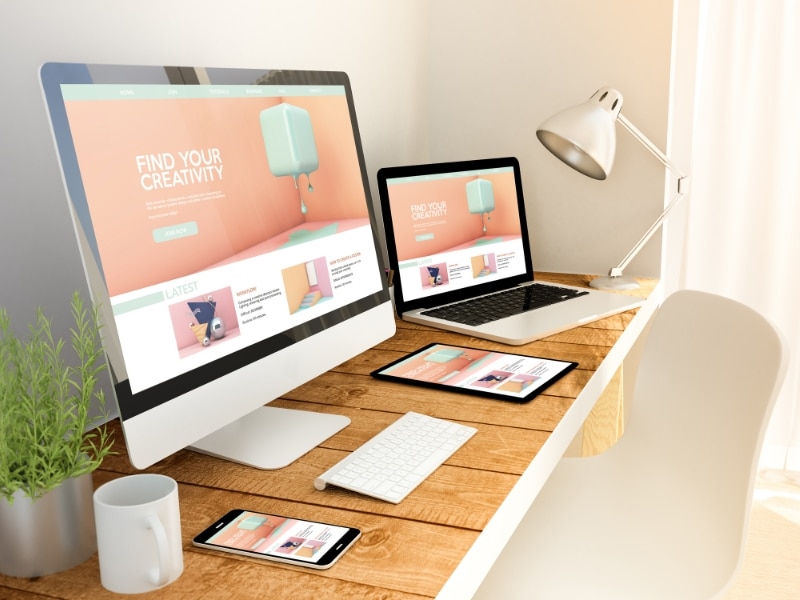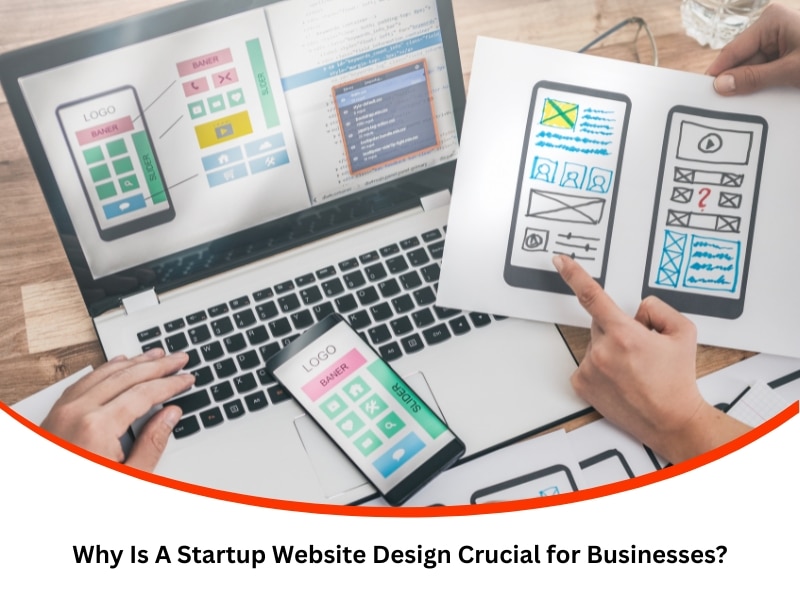Many startups begin with bold ideas but minimal resources. Amid product development and funding pitches, website design often ends up on the back burner. It’s seen as cosmetic rather than critical. But that thinking can quickly backfire. A well-designed website does more than look good — it builds credibility, communicates your offer clearly, and drives early traction. In a noisy digital space, design could be the difference between gaining attention and getting overlooked. This article explores how startup website design impacts visibility, trust, and growth.
Why do many startups overlook good website design?
Startups often move fast and break things. Unfortunately, design is usually the first thing to break. Budget pressures and time constraints mean founders are forced to prioritise, and flashy interfaces rarely top the list. But that comes with risks. Problems startups face include:
- Relying on generic templates that don’t reflect their brand, making the business blend into the crowd instead of standing out.
- Prioritising function over clarity and navigation which leads to user confusion and increased bounce rates.
- A lack of mobile responsiveness drives away mobile-first visitors, resulting in a loss of up to 50% of your potential traffic before engagement even begins.
- Missing calls-to-action create missed opportunities to convert leads, even with high visitor numbers, reducing conversions.
The result is a user experience that feels clunky, off-brand, or even unfinished. It sends a message — and not the one you want.
What happens when a startup website design is neglected?
Neglecting design creates credibility gaps. Potential customers form impressions within seconds. If your site feels amateurish, they may bounce without reading a word. Poor navigation, broken links, or non-responsive design only make things worse. Here’s what can go wrong:
- Bounce rates spike when navigation is clunky
- Low conversion rates follow when the UX is frustrating
- SEO rankings drop when content isn’t structured well
- A site that feels amateurish makes the business look unreliable
These design pitfalls quietly bleed trust and make it harder to get off the ground.
Could poor design limit your startup’s visibility and trust?
Search engines and users alike value structure. Bad design doesn’t just irritate people — it hurts performance too. SEO rankings drop if your site isn’t mobile-optimised or lacks hierarchy. Trust suffers when your message is buried under confusing visuals or inconsistent branding. Here’s what’s at stake:
- Visibility drops without mobile responsiveness, making it harder for people to find you in search results.
- Bounce rates climb, killing your ranking potential, since users quickly abandon poorly designed pages.
- Users hesitate to enter info on shady-looking sites, harming lead generation and customer acquisition.
- First-time visitors often fail to connect with your value, resulting in missed business opportunities and lower customer retention.
Instead, focus on designing a website that reflects the brand reputation. It signals professionalism and builds trust right from the first click.

How can great startup website design drive conversions?
Design is more than decoration — it’s how your brand speaks. Clear calls-to-action, visual hierarchy, and intuitive layout guide your visitors toward action. When a site feels effortless to use, users are more likely to convert.
- A strong visual hierarchy draws the eye to what matters
- Consistent branding reinforces recognition and confidence, increasing trust across multiple user interactions.
- CTA buttons placed strategically boost sign-ups and sales
- Page speed improvements enhance UX and SEO
When design and strategy align, startups grow faster. That’s why it’s worth pausing mid-journey to refocus on the site experience boldly. For those ready to take that step, it’s smart to explore custom website design solutions for a startup business.
What are essential design features for startup websites?
Some features are non-negotiable for startups that want to compete online. These aren’t bells and whistles — they’re the bones that help your website perform and build trust with visitors from day one.
| Feature | Why It Matters |
| Responsive design | Ensures usability across all devices |
| Clear CTAs | Guides users towards taking action |
| Fast load time | Reduces bounce rates and improves SEO |
| Simple navigation | Helps visitors find what they need without hassle |
| Visual branding | Builds recognition and credibility instantly |
More essential elements include:
- Readable fonts and ample white space improve readability and reduce user fatigue.
- Analytics integrations, so you can track user behaviour and adjust the design for better results.
- Secure forms and SSL certificates, which signal trustworthiness and protect customer data.
- Optimised image sizes, ensuring visuals load quickly without compromising quality.
You don’t have to include every flashy widget. However, ignoring essential elements of website design for business makes it harder to earn clicks, establish trust, and drive sales. Startups need function, clarity, and polish — all working together.
How can expert guidance improve startup website design?
Design isn’t just about taste — it’s about problem-solving. Experts help identify gaps, uncover UX issues, and align visuals with your startup’s strategy. They also ensure your site works on all devices and platforms without breaking a sweat. Hiring expert support leads to:
- Streamlined wireframes built for your goals
- Rapid prototyping to test ideas early
- Integrated analytics to track design impact
- Avoiding costly design reworks post-launch
It’s not about flair — it’s about function. Consider the impact of good web design on business growth, especially when every visitor counts.
Why is design often overlooked but essential for growth?
Startups need fast wins, and design often feels like a long game. However, good design pays off quickly, boosting trust, increasing engagement, and enhancing ROI. It’s a core part of the growth engine. You’ll notice:
- Higher retention through clean, consistent layouts
- More investor interest via a professional site
- Greater word-of-mouth thanks to a memorable experience
- Faster validation when your offer is clearly communicated
Design must be integrated early so your growth doesn’t stall before it starts.
Final thoughts
Design isn’t a nice-to-have — it’s the front door to your business. For startups trying to stand out, that door needs to look inviting, open fast, and show what’s inside. Done well, design builds trust before a word is read. Done poorly, it turns people away for good. That’s not a risk any new business can afford. For those seeking sustainable growth, design must be integral to the plan from the outset, not an afterthought. To explore what that can look like in action, see how Nifty Marketing Australia helps new businesses thrive.


